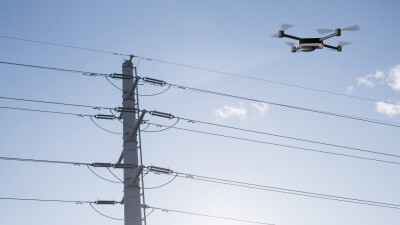Editor’s Note: Our recent webinar saw numerous audience questions come in that were focused on how United States-based operators and organizations can move forward with the adoption of foreign-made drone technology in light of heightened security concerns. To explore these issues and indirectly answer these questions, we reached out to three experts for their perspective. Below is a “user” perspective. You can also read an “American drone industry” perspective as well as a “foreign-made drone manufacturer” perspective that are designed to provide essential context around how operators and organizations can consider such things as they move forward with drone adoption in 2020 and beyond.
Sanctions, bans, and embargoes have been political and economic tools enacted by various global governments to put economic pressure on rival countries either to change their behavior, protect state secrets, make a political statement, create a level playing field for competing local goods, or stop/start some other form of change. With most of these instances, the primary goal has been to strengthen the host country’s economic, moral, or political stance. However, such measures may not always have the desired effect. Take, for example, when the U.S. in the 1940s established an embargo on essential imports to Japan, such as oil and gas, in response to the Japanese occupation of key airfields in Indochina. Instead of ceasing its activities and seeking an agreement with the United States to regain access to essential resources, Japan bombed Pearl Harbor on December 7th, 1941, which marked the U.S.’s entry into World War II. This is all to say that bans, like embargoes, may not always have the intended effect.
In the instance of our current trade arguments with China, the essential resource is Chinese-sourced drones and drone technology. By instituting policy bans on Chinese-sourced drone purchases, U.S. government agencies seek to maintain national security and to encourage American industry, or at least discourage Chinese imports. While the bans have not extended to private industry in the United States, American drone operators are concerned with the notion of Chinese-sourced drones being prohibited. Were such a ban to apply to private industry in America, the unintended consequence may be the crippling of a multibillion-dollar industry that has created thousands of jobs for Americans and resulted in substantial cost savings and streamlined operations for end-user industries.
As stated by Ian Annase, Founder and CEO of Zing, “A ban on Chinese-sourced drones could stifle innovation and put lives at risk in the United States. Prohibiting law enforcement from utilizing the cutting-edge sensors for Search and Rescue missions could mean the difference between life and death.” Annase is not alone in his sentiments. Because of DJI’s preeminence in the commercial drone industry, American software and hardware companies have built products to work specifically with that platform. The American drone industry is an ecosystem—by definition, an ecosystem means that each part is reliant upon the other to maintain sustainability.
Some commercial drone users have challenged assumptions set forth by the U.S. government agencies, questioning the validity of the claims as well as the severity of the proposed actions, stating that such actions would do more harm than good to American industry. Moreover, the day may come when American drone technology will surpass Chinese drone technology, leaving many to question whether bans on foreign drones are even necessary. As Dawn Zoldi pointed out in her article, “History tells us that the way things are now are not necessarily the way they will always be. Recall more than a decade ago Nokia had the corner on the mobile phone-making market; they were irreplaceable. Then along came Apple and Android, who completely crushed the tech giant. Does anyone today even remember their Nokia phone?”
Others argue that were DJI products and other Chinese-sourced drones to be removed from the American drone market, it would not only take the vast majority of drones out of the American National Airspace – it would potentially devastate businesses in various American industries that are dependent on the benefits that drones are uniquely capable of providing. “During the seven or so years since that first DJI Phantom came out, an entirely new economic ecosystem blossomed,” pointed out Skip Fredricks, Executive Producer, Drone Cinematographer, Program Director, and Drone Flight Instructor of Hollywood Drones. “The iPhone created new companies that created app companies; similarly, DJI drones have created thousands of small businesses.”
Yet, it is simply not feasible to place the responsibility on American manufacturers to quickly build replicas of DJI’s products to fill the void left by the banning of Chinese-sourced drones. American drone manufacturers, such as Skydio, are already hard at work to supply end-users with top-quality, domestically built drones. However, given the immeasurable number of Chinese-sourced drones currently utilized by American businesses, it would take quite some time, and considerable amounts of capital, to develop a fully American drone ecosystem that is no longer reliant upon foreign technology.
In regard to security matters, some operators believe the risks of using Chinese-sourced drones is being exaggerated. “I have heard the Anti-DJI group in think tanks and in politics bring up security, a valid concern,” stated Fredericks, “but is this a valid reason to ban them? We don't just shut things down because of implied security issues, we try to patch a hole, put up a firewall, and call out the problem. Destroying a vibrant new economy, where people have invested thousands and hundreds of thousands of dollars because of implied security threats, is more than misguided in these times, and in this economy.”
Fredricks’ question about whether the U.S. government is going too far to protect security is a concern shared by many within the commercial drone industry. They would like to see the government take a more measured approach that involves mitigation of security risks rather than a complete ban, which may be the closest option to a “win-win” scenario.
“It’s reasonable to suggest that considerable care should be taken both in operation and information handling when using any drone,” explained Tom Walker, CEO of DroneUp. “However, in many ways, security concerns are overblown. We give up far more information on a daily basis walking around with our mobile devices, and few have any clue where that information is ultimately going.”
Walker added, “So, much like any technology company, we need to remain vigilant and know where our information is going, but that’s not something unique to foreign-manufactured drones. The flight software, firmware, and components need to undergo the same supply-chain scrutiny that should be exercised when we import anything from outside of the US. Until then, certain foreign companies manufacture impressive products at competitive price points that are enabling job-creating opportunities in this emerging technology space.”
The relative security of foreign-manufactured drones—especially when compared to other types of technology that Americans use on a daily basis, like our smart phones or even other drones on the market—was recently demonstrated in an independent study hosted by PrecisionHawk, Inc. and conducted by the firm Booz Allen, an industry leader in cybersecurity.
In addition, in 2019, the Cybersecurity and Infrastructure Security Agency (CISA) issued Cybersecurity Best Practices for Operating Commercial Unmanned Aircraft Systems to help organizations utilizing drones identify some of the security and privacy risks and address them. Fundamentally, this guidance underscores that a drone must be treated in the same way a business treats any mobile device — a powerful storage and transmission vehicle that may be connected to the organization's enterprise network. These suggested mitigation measures may allow American companies to safeguard themselves against foreign (and domestic) security threats while still leveraging the cost-saving and risk-reducing benefits provided by drones.
Again, there may be a day when the current climate shifts and foreign drone manufacturers will no longer hold a monopoly. American drone manufacturers like Skydio continue to gain the respect and trust of end-users nationwide, and it is possible that Skydio could one day be the “Apple” to DJI’s “Nokia”. When this happens, we can start envisioning what an ecosystem featuring predominately American-made drones will look like. However, this type of ecosystem must be planned and developed over years and in phases, and any immediate and swift action prohibiting the use of foreign-sourced drones may inadvertently and adversely impact this American multibillion-dollar industry.
















Comments